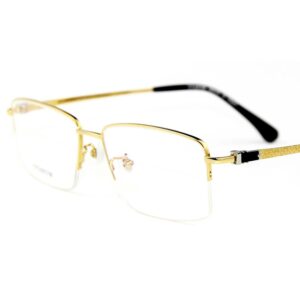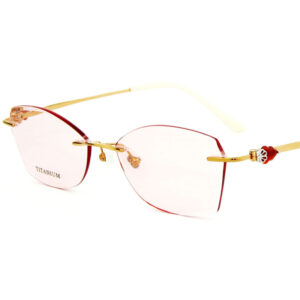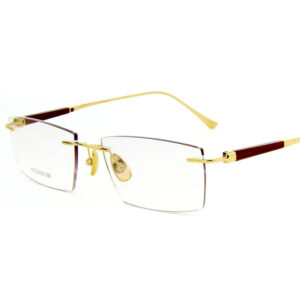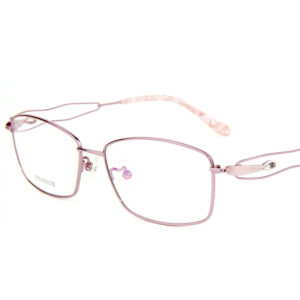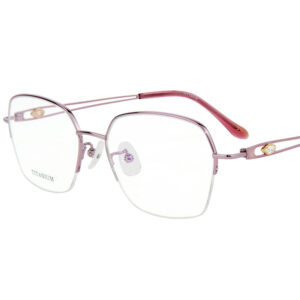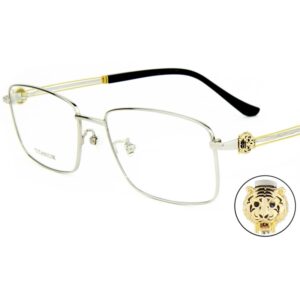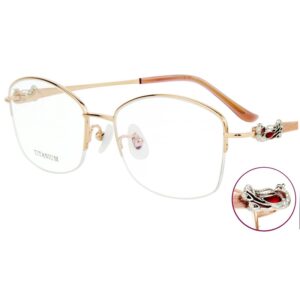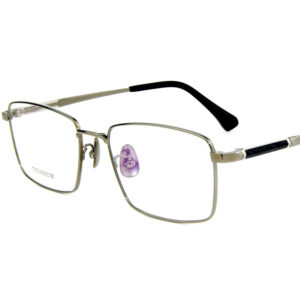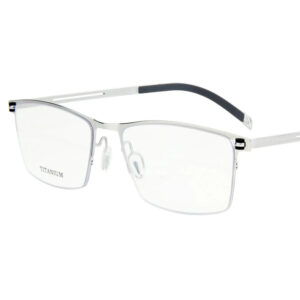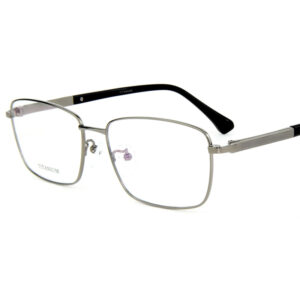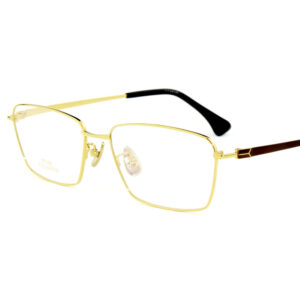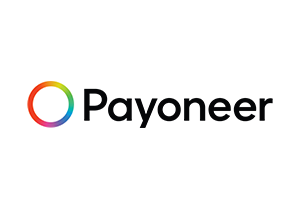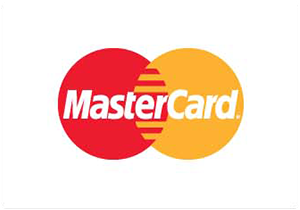In today’s highly competitive market, a unique and eye-catching design is crucial for a brand to stand out.
In today’s highly competitive market, a unique and eye-catching design is crucial for a brand to stand out. For startup brands, design is not just about aesthetics; it’s the best way to express the brand’s personality and positioning.
Custom design is a powerful tool that helps startup brands attract specific customer segments. Imagine an eyewear brand that quickly establishes its identity in the market through a distinctive design language, drawing in consumers who value individuality and high quality. That’s the power of custom design.
With custom design, brands can not only meet the growing demand for personalization but also carve out a niche in the market, laying a solid foundation for long-term growth.
2. Design Inspiration from Historical and Cultural Sources
Vintage Styles:
Classic design elements from the 20th century, such as aviator glasses and cat-eye frames, remain popular among consumers. By incorporating these vintage styles into modern designs, while adding new materials and techniques, you can attract a large following of retro enthusiasts.
-
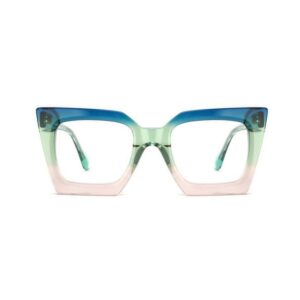
Bulk Wholesale Acetate Eyewear – 882284
$80.00 Select options This product has multiple variants. The options may be chosen on the product page -
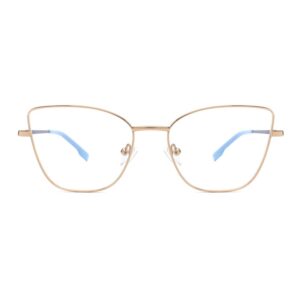
Bulk Wholesale Metal Eyewear – HT004
$80.00 Select options This product has multiple variants. The options may be chosen on the product page -
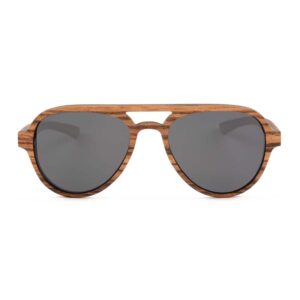
Wholesale Designer Wood Sunglasses – WS101
$95.00 Select options This product has multiple variants. The options may be chosen on the product page -
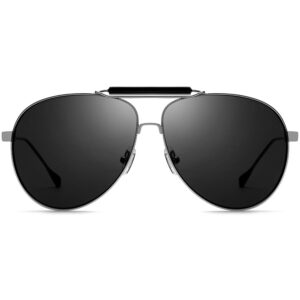
Wholesale Metal Sunglasses Manufacturer – 2035
$99.00 Select options This product has multiple variants. The options may be chosen on the product page
Influence of Global Craftsmanship:
Japanese precision craftsmanship, Italian fashion sense, and French elegance provide endless inspiration for brand design. By incorporating these cultural elements into modern brand designs, you not only enhance the product’s cultural value but also attract consumers seeking unique experiences.
Iconic Celebrity Styles:
From John Lennon’s round glasses to Audrey Hepburn’s cat-eye frames, iconic celebrity looks continue to exert a strong influence on modern designs. These designs not only preserve the legacy of these famous figures but also add a layer of cultural recognition to the brand.
3. Inspiration from Natural Elements
Colors and Materials:
The colors and textures found in nature are an inexhaustible source of inspiration for designers. Think of the green of forests or the blue of the ocean—these natural tones can inject vitality and energy into your brand’s designs. Using natural materials not only aligns with modern environmental trends but also adds authenticity and approachability to your brand.
Biomorphic Shapes and Structures:
Mimicking shapes from nature, such as the skeletal structure of animals or the shape of leaves, can result in eyewear designs that are both aesthetically pleasing and functional. These designs are unique and often provide a comfortable wearing experience.
Inspiration from Landscapes:
Natural landscapes like mountains, oceans, and forests can inspire unique design elements in eyewear. For instance, a frame design inspired by mountain ranges might emphasize strong, durable lines.
4. Fusion of Art and Architecture
Influence of Art Movements:
Baroque curves, modernist clean lines, and the bold colors of abstract art can all serve as sources of inspiration for eyewear design. By incorporating these artistic elements into your brand’s designs, eyewear becomes not just a visual tool, but an expression of art.
Borrowing from Famous Architectural Designs:
Elements like lines, structures, and materials from architecture can be translated into unique elements in eyewear design. For example, by mimicking the geometric structures of modern architecture, you can create frames with strong structural aesthetics that enhance the brand’s identity.
Collaborations with Artists:
Collaborating with artists to create limited-edition collections is a great way to elevate the artistic value of your brand. This approach not only brings unique designs to your brand but also attracts consumers who value art and collectibles.
5. The Influence of Fashion and Pop Culture
| Inspiration Source | Description |
|---|---|
| Contemporary Fashion Trends | Designs that keep up with fashion trends are more likely to attract young and fashion-conscious consumers. For example, combining minimalist styles or trending colors. |
| Iconic Film and Music Images | Classic eyewear looks from films like “Top Gun” or “Breakfast at Tiffany’s” provide rich inspiration. These images resonate emotionally with consumers. |
| Transforming Pop Culture Symbols | Incorporating symbols and elements from pop culture into your designs can make your brand more relatable. This attracts attention from younger generations. |
6. Technology and Futuristic Design
| Technological Inspiration | Description |
|---|---|
| Futuristic Design | Drawing inspiration from sci-fi films and cutting-edge technology can infuse your brand with a modern, futuristic feel. |
| Modern Materials and Techniques | Using lightweight materials like carbon fiber and techniques like 3D printing creates innovative, functional designs. |
| Digital Design Tools | 3D printing and CAD tools enhance efficiency in custom designs, enabling quick prototyping and testing. |
7. Global Design Trend Analysis
| Design Trend | Description |
|---|---|
| Regional Design Preferences | Different regions have varying design trends. For example, Asia may prefer minimalist designs, while Western markets value innovation. |
| Eco-Friendly and Sustainable Design | Sustainable materials and processes attract environmentally conscious consumers and enhance brand image. |
| Rise of Personalized Custom Design | Offering personalized custom designs appeals to niche markets, increasing customer satisfaction and loyalty. |
8. Sources of Inspiration for Designers
The Impact of Travel and Life Experiences:
Designers often draw inspiration from their travels and life experiences. For example, the unique landscapes, local cultures, and craftsmanship encountered during travels can directly translate into design elements. This source of inspiration not only enriches the design but also adds storytelling to the product.
Discoveries in Everyday Life:
Inspiration can also come from everyday life. For example, street architecture, lighting designs in restaurants, or even the color tones of a cup of coffee can spark creativity. This type of inspiration often resonates more deeply with consumers.
Insights from Client Interaction:
Interaction with clients is also a key source of inspiration. Understanding their needs and preferences allows designers to create products that are more aligned with market demands. Successful designs often emerge from close collaboration with clients, with continuous adjustments and optimizations.
Receive Custom Guidance
Looking for the perfect custom eyewear to represent your brand?
Reach out to Eyewearbeyond for expert guidance on choosing the best materials, styles, and customizations for your eyewear collection!
9. Case Studies: Successful Custom Brand Designs
| Brand | Key Success Factors |
|---|---|
| Warby Parker | Simplistic design and direct-to-consumer model have built strong brand loyalty. |
| Oliver Peoples | Blends Hollywood luxury with modern design, known for exquisite details and high-quality materials. |
| Gentle Monster | Avant-garde designs and art-focused branding appeal to young and artistic audiences. |
| Moscot | Combines classic and functional elements with modern touches, appealing to retro enthusiasts. |
| Ray-Ban | Maintains strong market share globally through classic designs and product quality, especially with aviator frames. |
| Persol | High-quality materials and innovative hinge design create a comfortable, stylish luxury eyewear brand. |
| JINS | Affordable yet fashionable designs appeal to a wide audience, establishing a strong presence in Asia and beyond. |
| L.G.R | Combines handmade craftsmanship with vintage style, offering luxury eyewear with a unique story. |
| Cutler and Gross | Bold designs and craftsmanship attract consumers seeking unique styles and personalization. |
| Thom Browne Eyewear | Fusion of vintage elements with modern luxury appeals to high-end consumers. |
10. How to Collect and Organize Design Inspiration
Collecting and organizing design inspiration is a crucial part of every designer’s work. First, create a personal inspiration library where you can record your ideas anytime, anywhere through photos, sketches, and notes.
Utilizing online platforms such as Pinterest, Behance, and Dribbble can help you quickly find design inspiration and interact with designers worldwide. These platforms not only spark creativity but also keep you updated with the latest design trends.
Regularly updating and reviewing your inspiration library ensures that your design ideas align with your brand’s development direction. This way, your creativity stays fresh and vibrant.
11. Recommended Websites for High-Quality Image Resources
| Website | Description |
|---|---|
| Unsplash | Free, high-quality photography suitable for inspiration and design reference. |
| Pexels | A rich collection of free images and videos covering various themes and styles, perfect for startup brands. |
| Shutterstock | Professional paid image library, suitable for finding high-quality visual materials, especially for high-end brands. |
| Adobe Stock | Integrated with Adobe Creative Cloud, ideal for designers needing high-quality materials. |
| Getty Images | Extensive coverage of history, news, and art, ideal for high-end brands. |
| Behance | A platform for showcasing design works, also a great source for discovering the latest design trends and styles. |
| User-generated content platform that helps discover trends and creative inspiration. | |
| Dribbble | A community where designers share their work, offering rich visual design inspiration for exploring new ideas. |
| Depositphotos | Paid image library providing high-definition images and vector materials, ideal for professional design needs. |
| Designspiration | A platform dedicated to designers for inspiration and image resources, helping quickly collect ideas. |
| Pixabay | Provides royalty-free, high-quality images and videos, perfect for brand design, especially for startups. |
| Stocksy | Focuses on creative and artistic image resources, suitable for finding unique design inspiration, especially for luxury brands. |
| Alamy | Offers professional photography and image resources covering a wide range of themes and styles, suitable for high-level design projects. |
| Picjumbo | Free high-resolution image resources that meet various design needs, ideal for budget-conscious startup brands. |
12. Conclusion: The Key to Turning Inspiration into Brand Design
Collecting inspiration is just the beginning; the key lies in how you turn it into actionable design concepts. By setting clear design strategies and aligning them with your brand positioning, you can ensure that every idea adds value to your brand.
For startup brands, innovation and experimentation are crucial to design success. By continuously trying new design approaches, you can develop a unique design language that helps your brand stand out in a competitive market.
Request a Free Quote
Wondering how to budget for your custom eyewear order?
Contact us to receive a tailored quote designed specifically for your eyewear needs!
FAQ: Common Design Questions for Startup and Custom Brand Clients
- How can high-quality design be achieved on a limited budget?
- Prioritize cost-effective materials and streamline the design process. Collaborate with an experienced designer to balance quality and affordability.
- What are the key steps to defining and solidifying brand identity?
- Start by identifying your brand’s core values. Use consistent visual design and storytelling across all touchpoints to reinforce brand identity.
- How do I choose the right materials for custom eyewear?
- Consider factors like durability, comfort, aesthetics, and cost. Consult with suppliers and designers to select materials that match your brand’s vision.
- What should I consider when designing for different customer segments?
- Understand the specific needs and preferences of each segment. Offer customizable options to cater to varying tastes and requirements.
- How can I ensure that my eyewear designs remain unique and innovative?
- Continuously seek inspiration from various sources, including art, nature, and technology. Regularly review and update your designs to stay ahead of trends.
- How do I communicate effectively with a designer?
- Clearly articulate your brand vision, goals, and preferences. Provide detailed feedback and be open to collaborative discussions throughout the process.
- What are the benefits of using digital design tools like CAD and 3D printing?
- These tools enhance design precision, speed up prototyping, and allow for easy adjustments, ensuring that the final product meets your expectations.
- How important is packaging design for a new eyewear brand?
- Packaging is crucial as it’s often the first physical interaction a customer has with your brand. It should reflect your brand identity and create a memorable unboxing experience.
- What are the current trends in eyewear design?
- Trends include sustainable materials, minimalist styles, and smart eyewear technology. Staying informed about trends helps in creating relevant and appealing designs.
- How can I incorporate sustainability into my eyewear brand?
- Use eco-friendly materials, adopt sustainable manufacturing processes, and design for durability to reduce environmental impact and appeal to conscious consumers.
- How do I protect my eyewear designs from being copied?
- Consider registering your designs with intellectual property rights, such as trademarks or patents, to legally protect your creations.
- What role does customer feedback play in design?
- Customer feedback is vital for refining designs and ensuring they meet market needs. Regularly gather and analyze feedback to improve your products.
- How can I create a strong brand narrative through eyewear design?
- Integrate your brand’s history, values, and mission into your design elements. Consistent storytelling across all brand communications strengthens the narrative.
- What are the advantages of offering customizable eyewear?
- Customization enhances customer satisfaction by providing unique products tailored to individual preferences, increasing brand loyalty and perceived value.
- How do I manage the production timeline for custom eyewear?
- Plan ahead by setting clear milestones, maintain close communication with manufacturers, and be flexible with timelines to accommodate potential delays.
- How do I determine the right pricing strategy for my eyewear?
- Consider production costs, market positioning, and competitor pricing. Aim for a balance that reflects the quality and exclusivity of your designs while remaining competitive.
- How can I leverage social media to promote my eyewear designs?
- Use platforms like Instagram and Pinterest to showcase your designs, engage with followers through interactive content, and collaborate with influencers to increase visibility.
- What should I include in a design brief for a new eyewear collection?
- Provide a detailed description of your target audience, design goals, preferred materials, style inspirations, and any technical requirements to guide the designer.
- How do I keep up with evolving consumer preferences in eyewear?
- Regularly monitor market trends, engage with your customers for feedback, and be willing to adapt your designs to meet changing demands.
- What are the most effective channels for launching a new eyewear brand?
- Utilize a mix of online and offline channels, including social media, e-commerce platforms, pop-up shops, and partnerships with retailers to reach a broad audience.
Clarify Your Questions
Still have questions about custom eyewear services?
Contact us for expert insights and tailored solutions!


